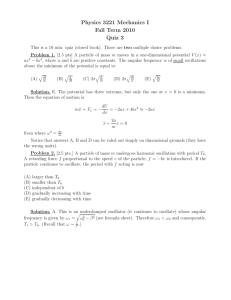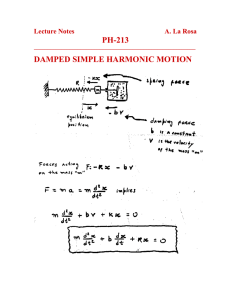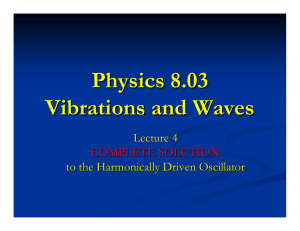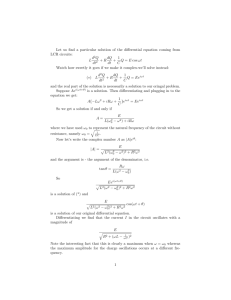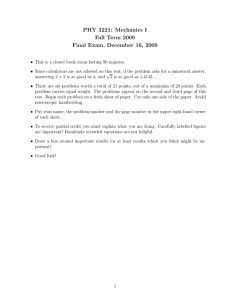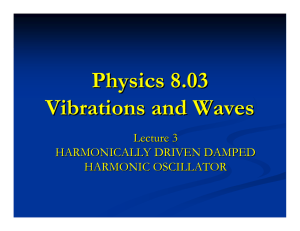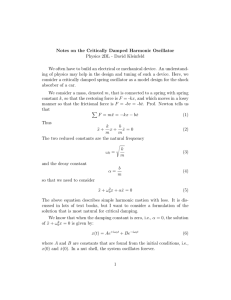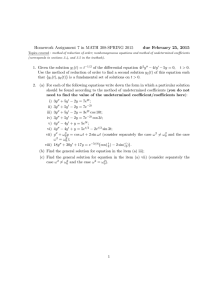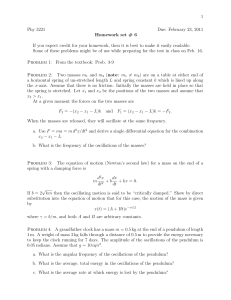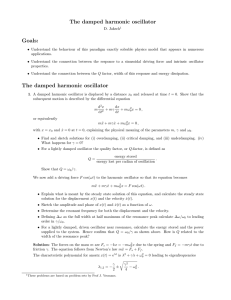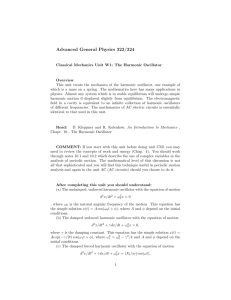Physics Problem Set: Classical Mechanics - Oscillators & More
advertisement
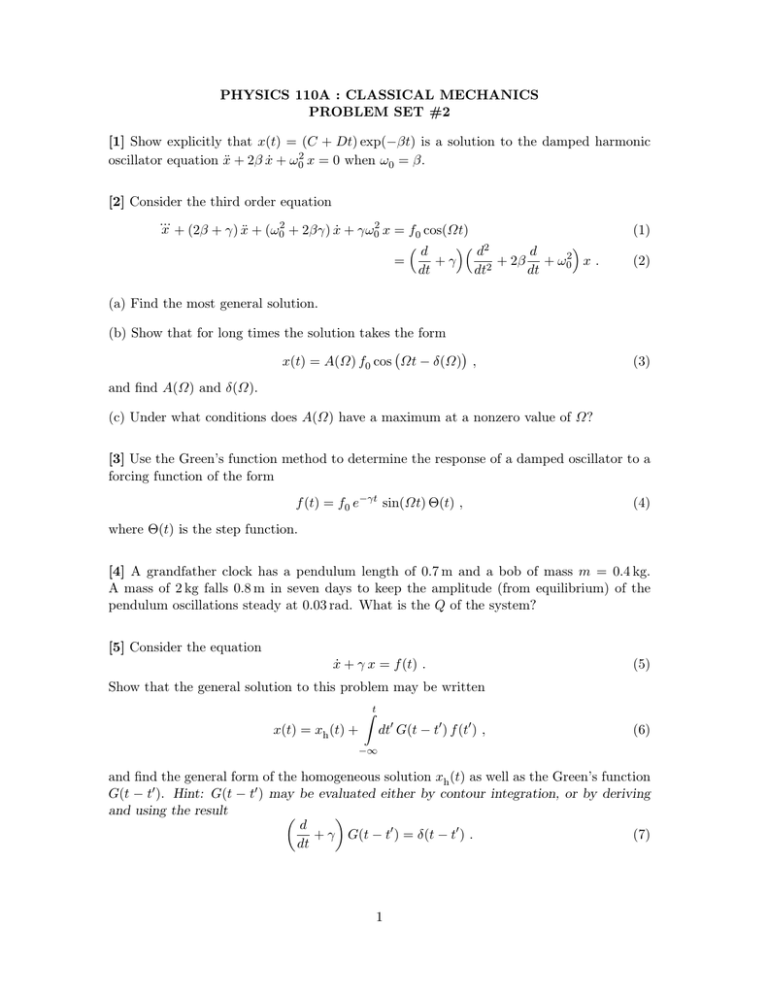
PHYSICS 110A : CLASSICAL MECHANICS PROBLEM SET #2 [1] Show explicitly that x(t) = (C + Dt) exp(−βt) is a solution to the damped harmonic oscillator equation ẍ + 2β ẋ + ω02 x = 0 when ω0 = β. [2] Consider the third order equation ... x + (2β + γ) ẍ + (ω02 + 2βγ) ẋ + γω02 x = f0 cos(Ωt) d2 d d 2 +γ + 2β + ω = 0 x . dt dt2 dt (1) (2) (a) Find the most general solution. (b) Show that for long times the solution takes the form x(t) = A(Ω) f0 cos Ωt − δ(Ω) , (3) and find A(Ω) and δ(Ω). (c) Under what conditions does A(Ω) have a maximum at a nonzero value of Ω? [3] Use the Green’s function method to determine the response of a damped oscillator to a forcing function of the form f (t) = f0 e−γt sin(Ωt) Θ(t) , (4) where Θ(t) is the step function. [4] A grandfather clock has a pendulum length of 0.7 m and a bob of mass m = 0.4 kg. A mass of 2 kg falls 0.8 m in seven days to keep the amplitude (from equilibrium) of the pendulum oscillations steady at 0.03 rad. What is the Q of the system? [5] Consider the equation ẋ + γ x = f (t) . (5) Show that the general solution to this problem may be written Zt x(t) = xh (t) + dt0 G(t − t0 ) f (t0 ) , (6) −∞ and find the general form of the homogeneous solution xh (t) as well as the Green’s function G(t − t0 ). Hint: G(t − t0 ) may be evaluated either by contour integration, or by deriving and using the result d + γ G(t − t0 ) = δ(t − t0 ) . (7) dt 1
